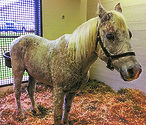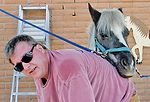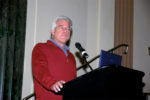Advertise Follow Us
Items Tagged with 'hoof problems'
ARTICLES
External Marks Can Indicate Foot Woes
Learn the telltale signs that a horse is experiencing hoof problems
Read More
Nutrient Strategies
Good Nutrition Aids in Preventing Costly Hoof Problems
Are Hoof Problems Caused More Often By Poor Nutrition Or By Improper Hoof Care?
Read More
Nutrient Strategies
Excessive Nutrients Spell Trouble
Can hoof problems be caused by the over use of supplements?
Read More
Dealing with Quarter Cracks and Sheared Heels
Double-trim method found effective in removing cause of the problem
Read More
Dealing With the Web-Wise Horse Owner
Today’s farriers need to realize second opinions are just a mouse-click away
Read More











